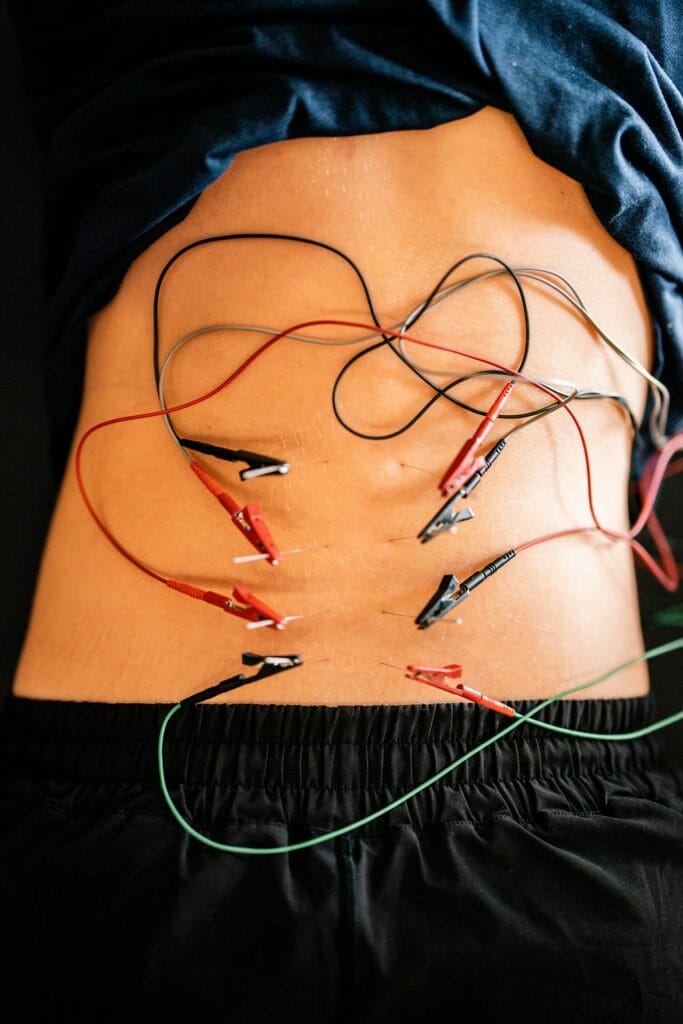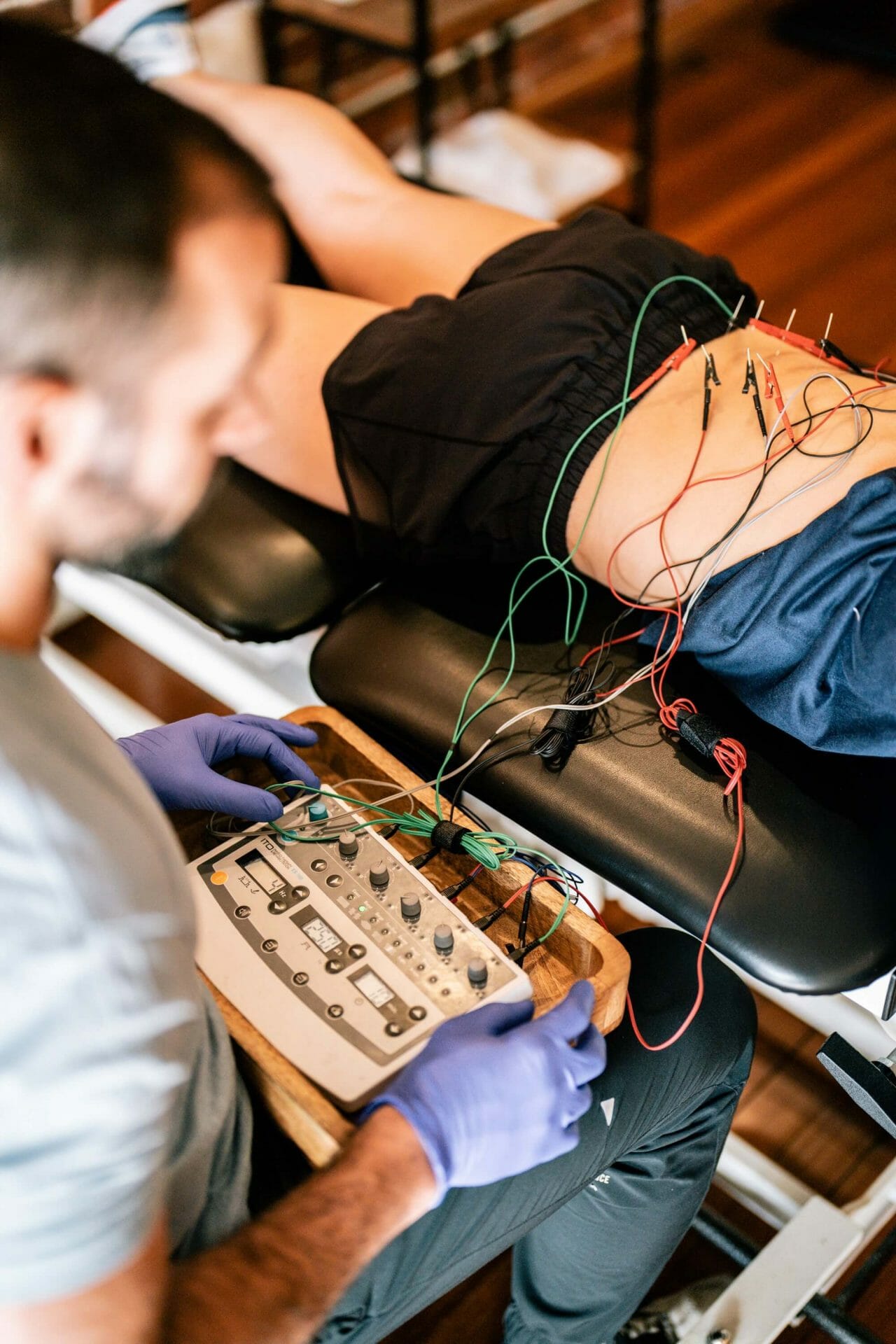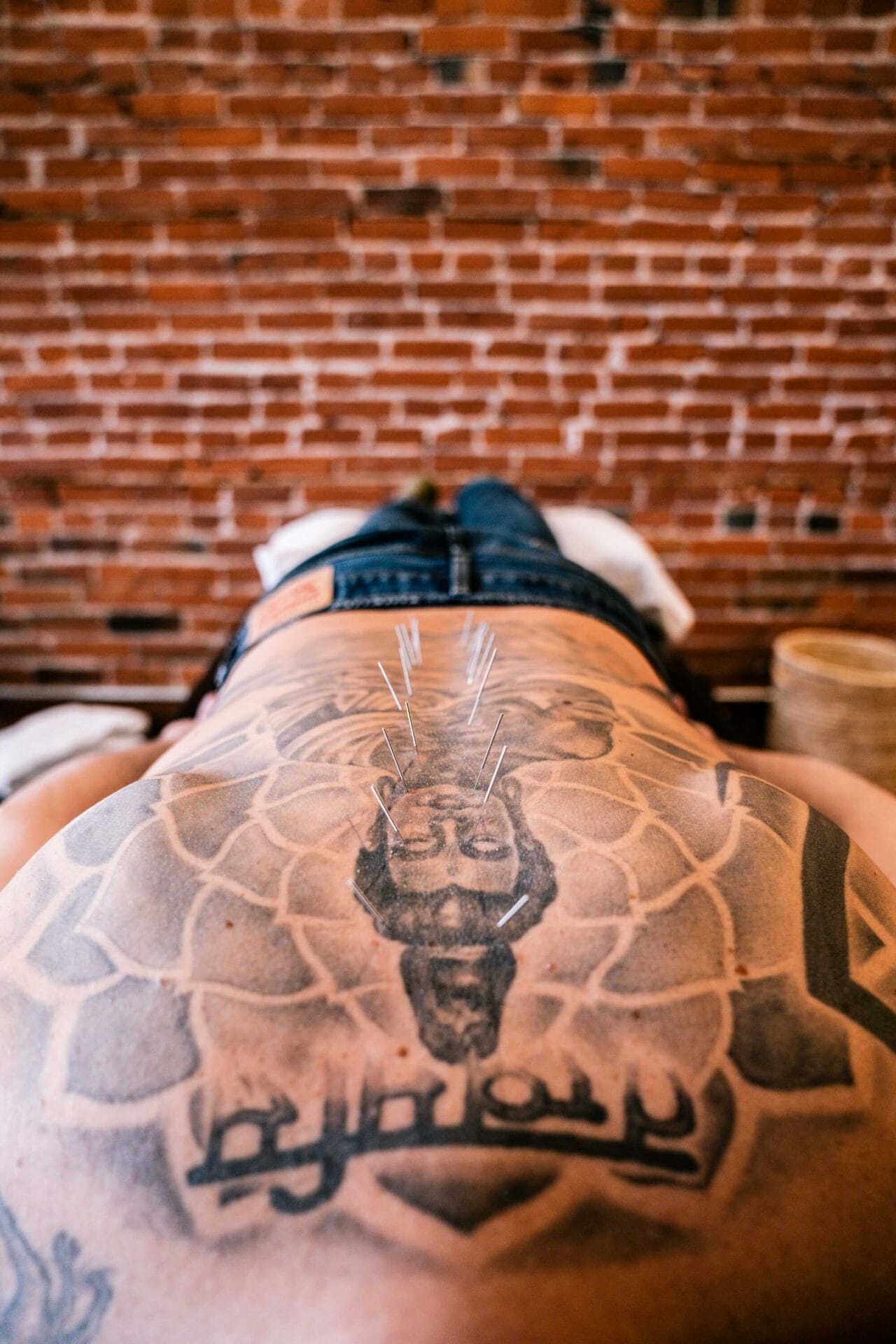Inserting needles into the skin and underlying muscle tissue has become a popular way to accelerate recovery from injuries and painful conditions. This growing interest has sparked many discussions around dry Nneedling vs. acupuncture, as the two techniques often get confused. The term dry needling is often used by many practitioners, including Physical Therapists, Chiropractors, Medical Doctors, and acupuncturists. So if you’re wondering if dry needling is right for you, it can be difficult to know where to go.
Understanding the different types of dry needling and the different types of clinicians performing dry needling can help you choose the right place for you.
What is Dry Needling?
Dry Needling is a term used for a treatment that uses a needle without a liquid (or injectable). Most often, the needle used in this process is a very thin, filament needle.
This general definition of the term dry needling sometimes makes it confusing for the general population to understand what a treatment with dry needling might look like for them.
And unfortunately, there isn’t an easy answer.
Here’s the best guidance we can give you:
When the clinician performing the DN is a musculoskeletal expert, they will likely be doing a treatment to address the muscles, tendons, and nerves to help you move better.
Much of the research around Dry Needling in the field of Physical Therapy deals with Trigger Points and how they can limit a muscle’s ability to function. Dry Needling has been shown to reset the muscles on a structural, biochemical, and electrical level, which helps you not only move better but also reduce pain, feel better, and recover faster.
For more information, please also see my article: Dry Needling for Myofascial Trigger Point Pain: A Clinical Commentary
So, when a physical therapist or Chiropractor (who specializes in the MSK system as it relates to movement and pain) is performing dry needling, the process is directly related to the evaluation of how your body moves and what muscles we need to treat in order to help you move better and reduce pain.
If the practitioner is an acupuncturist, their evaluation will encompass evaluative skills that often relate to Traditional Chinese Medicine, energy fields, and meridians. The evaluative process, and therefore the treatment strategy, does not usually involve the mechanical evaluation of how you move. Now, keep in mind, there are some acupuncturists who have additional training in the MSK system, but their field has a broader scope than most MSK specialists, which has its pros and cons as they relate to your potential MSK injury.
Dry Needling Techniques You Might See in Your Physical Therapy Appointment
As with many other manual techniques, there are different techniques that might be utilized in a typical dry needling session.
In general, most Dry Needling sessions will last somewhere between ten and thirty minutes, and in the PT world, they are almost always combined with other therapies, including massage, joint mobilizations, modalities like laser therapy, and exercises.
There are different types of techniques a therapist might use in a dry needling session, and often the technique chosen will align with the therapist’s goals for your session.
Here is a review of the types of techniques you might see and why:
The In-and-Out Technique
The in-and-out technique, also called pistoning, involves inserting the needle directly into the trigger point and manipulating the needle to create a Local Twitch Response, which has been shown to reset the muscle and allow it to function more normally.
After the desired response, the dry needle is removed, disposed of properly, and a new sterile needle is used for the next treatment area.
The pros to this technique are that the therapist can quickly and accurately test their theory on how your specific movements and patterns are being affected by that muscle or muscle groups. Treating in this way helps you get to the bottom of your injury faster, as we are super sleuthing out the most problematic causes.
The con to this technique is that for some people, the twitch responses can be uncomfortable. While most people don’t feel the needle insertion, the twitch responses can be pretty strong and because of this, some people prefer the In Situ method of dry needling.
Dry Needling with or without Electrical Stimulation
The primary goal of this treatment is to treat your peripheral and central nervous system by inserting and leaving the filament needles in the desired treatment area. Therapists will let the needles sit (in situ) either with or without electrical stimulation. This type of dry needling can be superior to the in-and-out technique for encouraging muscle recruitment, venous return (recovery), and encouraging restored nerve health to an injured nerve, such as in a cervical, lumbar, or spinal disc injury.
The pros to this technique are that it is often considered more comfortable for the patients, and it is sometimes superior to the in-and-out technique in restoring nerve health.
The main con to this technique is that needles are usually left in situ anywhere from 5-25 minutes, which limits our ability to use a quick test-retest method in each suspected area of involvement. This can sometimes make the root cause of the injury more difficult and/or take more time than if we are using a quick reset method followed by movement testing.
Benefits of Dry Needling
Dry needling has been shown to:
- Decrease pain (through pain pressure threshold ratings)
- Increase blood flow
- Increase range of motion
- Improve muscle activation or muscle firing
- Improve function
- Decrease the use of opiates to manage pain
Here are some studies that highlight the use of Dry Needling to treat:
- Low Back Pain (https://www.tandfonline.com/doi/abs/10.1080/10669817.2021.2011556 )
- Plantar Fasciitis (https://pubmed.ncbi.nlm.nih.gov/30379937/
- Hip arthritis https://pubmed.ncbi.nlm.nih.gov/31352178/
- Patellar Tendinopathy https://pubmed.ncbi.nlm.nih.gov/31606317/
Dry Needling Side Effects

The most common side effects include
- Bruising (treated areas may incur bruising, and this is more common if the patient is on blood thinners).
- Muscle soreness after needling can occur for up to 48 hours after the session in the muscles treated. This is due to the biochemical reset in the muscles and will often dissipate fairly quickly with movement like walking that encourages blood flow to accelerate the body’s natural healing process.
- Skin irritation, or minor red spots, may be noticeable in the areas treated. This dissipates very quickly after treatment.
Very, very rare occurrences of more serious side effects have been reported, including:
- Fainting, due to a vaso-vagal response, can occur in a very small number of patients.
- Pneumothorax (puncturing of a lung) has a minimal chance of occurring, and this risk is greatly reduced when being treated under an appropriately trained clinician.
While these incidents are very, very low, it is still very important that you choose a provider who has been well-trained in dry needling and the important anatomy, technique, and application of the technique.
An inexperienced or unlicensed person should never perform dry Needling.
What is Acupuncture?
The typical practice of acupuncture is rooted in traditional Chinese medicine. It is a broader medical approach to the treatment of pain and other conditions. The approach involves an integrated philosophy that addresses more than the musculoskeletal system and movement, but also how the body is affected by Eastern Medicine’s meridians related to organ systems and energy fields.
Oftentimes, the Acupuncturist may refer to the release of things like chi (flow of energy) in the process.
So, what is the difference between dry needling by an MSK Specialist (PT, CHIRO) and an acupuncturist, and which technique is right for you?
When asking yourself this question, there are a few things to consider, like:
- Do I think my symptoms are musculuskeletal in nature (an injury to the MSK system, involves the bones, muscles, nerves, or joints).
- Do I think there may be an underlying systemic component that I should see a doctor for first, or do I think my body has a systemic issue going on in addition to an MSK issue that might benefit from both approaches?
- What are the Pros and Cons of Dry Needling?
Due to the positive reports of successful patient outcomes with dry needling therapy, there has recently been a rapid increase in the research being done in the field of physical therapy.

Dry Needling vs. Acupuncture Similarities
When we explore the common ground between dry needling and acupuncture, several fascinating similarities emerge. Both therapeutic approaches utilize identical tools—delicate, sterile stainless steel filiform needles that are remarkably fine, allowing for precise placement with minimal discomfort. As a patient, you’ll experience a similar sensation during the initial phase of treatment as these slender needles gently pierce your skin under the careful guidance of your practitioner.
The fundamental insertion technique shares remarkable commonalities across both disciplines, though the underlying philosophy directs how these needles are ultimately deployed. Your acupuncturist and physical therapist have each spent countless hours perfecting their needle placement skills, though they’re working toward different therapeutic goals. While your physical therapist targets specific trigger points or muscular bands to release tension, your acupuncturist may select points along traditional meridian pathways to influence energy flow throughout your entire system. This distinction in depth and target tissue reflects the unique training backgrounds and clinical objectives of each healing tradition.
Dry Needling vs. Acupuncture Differences
Distinguishing between these needle-based therapies comes down to practitioner training and treatment philosophy. As musculoskeletal specialists, physical therapists apply dry needling specifically for movement dysfunction and pain arising from muscles, joints, and nerves. Their comprehensive approach integrates needling with joint mobilizations, neuromuscular reeducation, postural training, and targeted exercise programs, addressing the complete movement system rather than just the painful area.
Acupuncturists practice within traditional Chinese medicine’s framework, which may include musculoskeletal knowledge but encompasses a broader scope addressing energy meridians and systemic health. While they might not provide the same physical rehabilitation components as therapists, acupuncturists often complement their needling with herbal supplements and dietary recommendations. For complex conditions involving both structural and systemic factors, many patients benefit from collaborative care where physical therapists and acupuncturists work together, each contributing their specialized expertise to your healing journey.
So, Which is Better?

This question really should be, “Which is Better for you?”
- For an MSK injury, an MSK specialist like a PT or Chiro may be a better option, as they are trained to give a multifaceted approach to the treatment of your MSK pain and movement condition. However, recognize that there are acupuncturists who spend extra time educating themselves in the MSK world, and so a well-trained acupuncturist who specializes in sports medicine might be a good option to treat your MSK injury as well.
- For an injury that appears to have a non-MSK component, consulting your MD first would be best.
Start Your Path To Precision Healing
The verdict isn’t about which technique is inherently superior, but rather which approach—and more importantly, which practitioner—aligns best with your specific needs. Taking time to research a provider’s experience with dry needling and their specialization in treating conditions similar to yours is crucial for optimal results.
My opinion is that training, experience, and reputation matter. Finding a well-respected clinician with lots of experience is key when choosing a dry needling provider. I always tell patients that choosing the right person is important in any field.
For anyone who is having movement or mobility limitations related to their pain, the Physical Therapist is going to offer adjunctive treatments to bridge the gap between reducing pain and restoring function and movement.
However, a good Physical Therapist will work well with an experienced, trusted acupuncturist and vice versa to give potentially even faster results than with one clinician alone. That said, if you’re looking to explore dry needling in Philadelphia, PA, call us today to schedule a consultation.